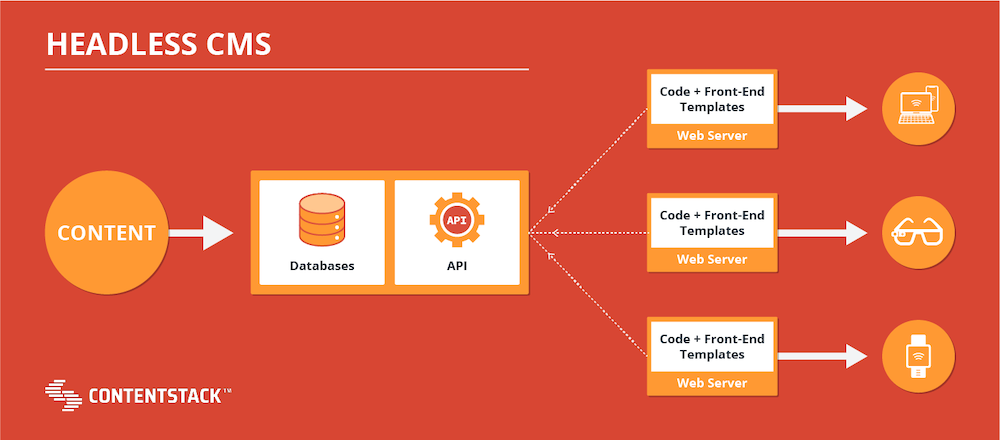How top companies leverage headless CMS for improved security and efficiency

Share

Learn essential strategies and best practices to fend off threats and safeguard your headless CMS. These proactive strategies allow you to prevent cyberattacks and maintain CMS security. Understand the threats, create unique passwords, use SSL certificates, and secure CDNs and firewalls. Leverage the security benefits of a headless CMS to prevent data breaches and losses. Request a demo to experience it firsthand.
Highlights
You'll learn about securing your headless CMS against cyberattacks.
- SSL certificates and firewalls: Firewalls and SSL certificates encrypt your connection and filter incoming traffic.
- Best practices for content creators: Content creators should avoid clicking suspicious links. They should also use strong and unique passwords.
- Secure third-party integration: Without adequate security, third-party integrations could become an entry point for attacks. Ensure they are secure and from verified sources.
- Create system backups: Creating backups cannot prevent attacks. However, they serve as a contingency to minimize loss and restore the system if an attack occurs.
Taking proactive steps will enhance your CMS security and protect you from potential losses. Request a demo to see how it works.
With cyber threats on the increase, your best bet is to opt for a more secure way to manage content. That desire is driving the growth of headless CMSes.
A headless CMS is a CMS without a head or front-end presentation layer. It is different from a traditional CMS. While a traditional CMS's front and back end are one unit, they are separated in a headless content management system. It is built as a back-end content hub, allowing it to integrate with any front-end framework and distribute content to multiple channels.
A headless CMS offers more security because the front end and back end are two separate components. So, if an attack happens on the front end, it does not affect the back end. Also, since it is decoupled, it also has a lower entry point for potential attacks.

Understanding the threat landscape
Here is the thing. Understanding the threat landscape enables you to plan your security strategies. Here are the most common security threats in a headless CMS environment:
- DDoS attacks
- SQL/code injection.
- Unauthorized access
A distributed denial of service (DDoS) attack is when cybercriminals try to take down a system by compromising multiple other systems and then using them to overwhelm a web server. When there is a DDoS attack, users cannot access the system.
A code injection is quite different. Attacks use code injection attacks to exploit loopholes in your input validation. They introduce malicious code into the CMS environment, allowing them to run dangerous commands. Finally, unauthorized access is also quite common. It refers to intruders breaching the CMS and accessing sensitive information.
Although these cyberattacks take different forms, they are equally devastating. Hence, you must prioritize CMS security to avoid data breaches, financial losses, or potential lawsuits resulting from cyberattacks. If left unchecked, these cyberattacks can damage your brand reputation, disrupt digital experiences and lead to severe losses for your business.
The security benefits of a headless CMS
Does a headless CMS offer more security than a traditional CMS? Yes. Headless CMSes are decoupled, which means they have very little surface area that attackers can target. Since the front end is separate from the back end, cybercriminals cannot take down the entire system. If the front end comes under attack, it does not disrupt the back end.
Headless CMS platforms also offer API security and third-party integrations that can enhance security. They offer various encryption mechanisms and SSL certificates for secure HTTPS connections. You can also control access by defining permissions and user roles. Finally, most headless CMSes are cloud-native, which makes them more resilient.
Overcome traditional CMS issues with Contentstack: Are you tired of slow development times and rising costs due to legacy monolithic suites? Contentstack offers a modern, component-based solution designed for the needs of today's enterprises. Discover agility and improved ROI. Request a demo to learn more.
Case studies
Weaveworks
After many years of using WordPress, Weaveworks wanted to scale its operation. They needed a flexible and secure CMS suitable for a fast-paced startup environment. Scalability, security, and access control were at the top of their list of requirements. The Contentstack headless CMS offered all that, including easy onboarding, ease of use and process compatibility.
Hear from Sonja Schweigert, the VP of Marketing, "Contentstack is a very intuitive platform that doesn't require much time to ramp up. New team members are productive within the hour."
With more security and control from Contentstack’s headless CMS, Weaveworks took charge of its content strategy and delivered 75% faster publishing speed and 50% growth in content delivery.
Read about Weavework’s success story after switching to a secure CMS with Contentstack.
Health Karma
The safety of customers’ personal data was a top priority for Health Karma. So, they needed a CMS that could support a modular approach to security. They knew that their system would have access to sensitive data.
Switching to Contentstack enabled Health Karma to enhance CMS security. They could select features to access certain data while turning off idle features. The modular infrastructure of Contentstack's headless CMS enhanced their data security. It also enabled marketers to publish content directly.
Michael Swartz, the President, said, “Contentstack allows us to execute on this infrastructure from a content standpoint.” It gives us the ability to set up content and data flows in a way that lets us optimize and personalize at scale while keeping data safe."
Read more about Health Karma’s content scale-up after securing their CMS with Contentstack.
Best practices to improve headless CMS security
Implementing strong passwords: passwords are a staple in any online security system. Create strong passwords and limit user privileges using user access control and permissions. Doing so ensures that only authentic and authorized users can access sensitive information in the CMS environment.
Deploying SSL certificates and a web application firewall (WAF): A web application firewall monitors and filters all incoming traffic, ensuring that threats are kicked out, while an SSL certificate encrypts the connection. These security measures encrypt data transmission and block malicious traffic.
Secure any third-party integrations: Without a doubt, third-party apps and integrations enhance your CMS functions. So, it is essential to secure them so they do not become an entry point for potential attacks. Ensure you monitor and update them to ensure they do not become an entry point for cyberattacks.
Regular backups: While backups do not stop cyber attacks, they mitigate your loss if they happen. Creating regular updates will reduce the potential damage from a security breach. So, ensure you back up the system often as a form of contingency.
Safeguarding your website with CMS security
As cyberattacks continue to rise, businesses must be proactive in website security and cyberattack prevention. You must understand how to secure your CMS against cyberattacks. The organization must spell out a clear CMS and website security policy to protect against cyberattacks.
Content creators must be more vigilant and avoid clicking on suspicious links. As passwords are a staple in online security, ensure you use unique and strong passwords. It is also a good practice to change your passwords often and avoid using the same passwords on different platforms.
Secure your content distribution by using a reputable content delivery network (CDN). Finally, follow the stated best practices like deploying firewalls, SSL certificates, strong passwords and creating backups. That way, you safeguard your website with CMS security.
Contentstack: A Leader in CMS Performance. Experience the strength of Contentstack, a standout performer in Forrester's Q3 2023 CMS report. Contentstack simplifies your digital experience with our back-end extensibility and global deployments. Request a demo to learn more.
Future trends in CMS security
Without a doubt, artificial intelligence (AI) and machine learning (ML) adoption continues to gather pace. Unsurprisingly, both will play integral roles in future content management system security.
For instance, CMSes will be able to rely on ML algorithms to analyze large data, identify patterns and mitigate security issues. Developers will also be able to build ML algorithms to detect and prevent cyberattacks. These proactive approaches are the right ways to fend off cyberattacks.
Aside from that, CMS administrators will be able to automate CMS security protocols using the integration of AI tools. Such tools will also enhance incident response. AI will also improve threat intelligence and reporting, making CMSes more secure. The flexibility of headless CMSes and the power of AI bode well for CMS security in the future.
FAQ section
How can content creators help in maintaining CMS security?
They must use strong and unique passwords and follow best practices. They must also take care when using the CMS to ensure they do not click on suspicious links. Creators can also help by updating the CMS regularly to ensure it is up to date with security features.
What are SSL certificates, and how do they contribute to CMS security?
Secure Sockets Layer (SSL) certificates are digital certificates that authenticate a website's identity. They encrypt connections and data in transit, protecting it against hackers or unauthorized users.
What is the difference between a Headless CMS and a traditional CMS in terms of security?
A headless content management system separates the front-end presentation layer and back-end content hub. But in a traditional CMS, these components are one. So, while an attack can take down a whole traditional CMS, it is impossible to do that in a decoupled CMS. If the front end of a headless CMS comes under attack, it does not disrupt the back end.
How can regular backups help in preventing cyberattacks?
Backing up your system does not prevent or stop cyberattacks. Instead, it helps you reduce loss if an attack happens. With regular backups, you can restore your system to its previous state before the attack.
What should I consider when integrating third-party services into my CMS?
Ensure that third-party tools or services have up-to-date security features. Also, ensure they are from a reputable source, have multiple positive reviews and offer regular updates.
Learn more
Your CMS holds valuable content that enables you to deliver digital experiences to your audience. So, CMS security should be a priority for your digital strategy. Understand the potential threats, stay informed and follow best practices.
Having a secure CMS ensures that your content remains safe, protecting your business against theft and data breaches. If you are considering a headless CMS with advanced security, request our demo for a hands-on experience.



